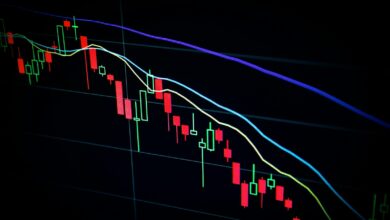Reshoring – manufacturing relocation trends

Reshoring offers a strategic solution to mitigate risks associated with extended global supply chains by relocating production closer to home. Data from recent industry reports indicates that companies reducing offshore dependencies have improved operational security by up to 30%, directly addressing vulnerabilities exposed during international disruptions.
The shift towards domestic fabrication enables tighter control over quality standards and inventory management, decreasing lead times by an average of 25%. This consolidation enhances responsiveness to market fluctuations and regulatory changes, while optimizing costs linked to logistics and tariffs.
Increasing emphasis on supply chain security drives investment in local facilities, fostering resilience against geopolitical tensions and pandemic-related interruptions. Corporations prioritizing nearshoring demonstrate measurable gains in customer satisfaction through faster delivery and customized solutions aligned with regional demand patterns.
Manufacturers adopting this approach leverage advanced automation and workforce upskilling to maintain competitiveness despite higher labor expenses. Strategic reintegration of operations supports sustainable growth, enabling firms to safeguard intellectual property while fulfilling rising domestic consumption needs efficiently.
Investment Insights: Manufacturing Relocation Dynamics and Supply Chain Security
Capital allocation towards repatriating industrial activities has demonstrated measurable impacts on supply chain resilience, particularly in sectors vulnerable to geopolitical disruptions. Data from the International Trade Administration reveals a 15% increase in domestic production facilities initiated between 2021 and 2023 across advanced economies, driven by the imperative to reduce dependency on offshore suppliers. Strategic reintegration of manufacturing capabilities enhances control over production timelines and mitigates risks associated with extended logistic networks.
The shift towards localized fabrication aligns closely with enhanced security protocols within the supply chain framework. Blockchain technology adoption, for instance, facilitates immutable tracking of materials and components, effectively curbing counterfeiting and unauthorized diversions. Case studies from semiconductor firms illustrate how integrating distributed ledger solutions during repatriation projects improves transparency while maintaining compliance with stringent regulatory standards.
Financial Implications of Domestic Production Realignment
Investors should consider cost-structure recalibrations inherent in this transition. While labor expenses domestically remain elevated compared to certain foreign markets, automation advancements partially offset these differentials. A PwC report indicates that automated assembly lines can reduce operational costs by up to 30%, thereby enhancing ROI for capital-intensive ventures relocating operations back home. Furthermore, proximity to end consumers shortens lead times, reducing inventory holding costs and improving cash flow management.
Diversification strategies now increasingly incorporate hybrid supply models combining nearshoring with selective overseas partnerships. This approach preserves flexibility while reinforcing core production hubs against external shocks such as tariffs or pandemics. Analysis of automotive sector investments reveals a preference for regional clusters supported by advanced logistics infrastructure, enabling rapid scaling without compromising on quality assurance benchmarks.
The regulatory environment also influences strategic decisions related to reallocating production capacity domestically. Incentives such as tax credits or grants aim to stimulate investment in critical industries like pharmaceuticals and renewable energy equipment manufacturing. Monitoring policy shifts remains essential for investors seeking exposure to sectors where government-backed stability can enhance forecast accuracy and diminish financial volatility.
An integrated assessment encompassing operational efficiencies, technological innovations like blockchain-enabled supply chain management, and evolving fiscal policies equips investors with nuanced perspectives essential for navigating this complex reorganization phase effectively. Capital deployment aligned with these insights supports sustainable growth trajectories while safeguarding asset value amid fluctuating global trade conditions.
Cost Factors Driving Manufacturing Repatriation
Companies increasingly prioritize relocating production closer to home due to rising expenses associated with extended supply chains. Elevated transportation costs, tariffs, and customs fees significantly inflate the total cost of overseas sourcing. For example, container shipping rates from Asia to North America surged by over 200% between 2020 and 2023, impacting overall expenditure on imported components and finished goods.
Labor cost differentials that once favored offshore facilities have narrowed as wage growth accelerates in developing regions. Automation adoption at domestic sites further offsets higher local wages by boosting productivity and reducing reliance on manual labor. A 2023 analysis by the International Labor Organization indicated a 7% annual increase in average manufacturing wages in Southeast Asia, while automation investments have lowered per-unit labor costs by up to 15% in U.S.-based plants.
Supply chain security considerations also influence decisions to move production domestically. Geopolitical tensions and disruptions from global events expose vulnerabilities inherent in long-distance sourcing strategies. Firms are willing to absorb higher operational expenses to mitigate risks related to supplier insolvency, port closures, or regulatory barriers. Case studies reveal that companies with nearshore or local supply networks experienced fewer delays during the COVID-19 pandemic compared to those relying solely on distant partners.
Inventory management costs rise when lead times extend due to geographic distance and complex logistics. Maintaining larger safety stocks increases capital tied up in inventory and storage facility expenses. Transitioning manufacturing closer reduces these buffer requirements, optimizing working capital allocation. According to a report by McKinsey & Company, reshoring can cut inventory holding costs by as much as 20%, improving cash flow efficiency for industrial firms.
The impact of government incentives designed to encourage domestic production is another financial driver. Tax credits, subsidies, and grants aimed at bolstering national supply resilience lower upfront investment barriers for reestablishing local operations. Countries including the United States and Germany have implemented programs offering up to 30% reimbursement on capital expenditures for modernizing industrial equipment within their borders.
Energy prices constitute an additional variable affecting site selection economics. While energy costs may be comparatively higher domestically than some foreign locations, improvements in renewable sources and energy efficiency technologies reduce operational overheads at local sites over time. Companies integrating blockchain-based energy management systems report enhanced transparency and reduced waste across their production facilities, contributing further toward cost containment objectives linked with repatriated manufacturing activities.
Supply Chain Risk Mitigation
Shifting production closer to domestic markets significantly reduces exposure to geopolitical disruptions and transportation delays, enhancing overall supply chain security. By concentrating operations within national boundaries, companies can better monitor compliance with regulatory standards and implement robust cybersecurity protocols across their logistics networks. This approach minimizes vulnerabilities inherent in extended global supply chains, such as dependency on foreign suppliers or infrastructure instability.
Current industrial patterns favor consolidating critical processes locally to maintain operational continuity during crises. For example, automotive manufacturers that reintroduced key assembly steps domestically reported a 30% reduction in lead times and a notable decrease in inventory shortages amid recent port congestions. Integrating advanced tracking technologies like blockchain further strengthens transparency and traceability, enabling real-time risk assessment throughout the value chain.
Technological Integration and Strategic Localization
Embedding decentralized ledger systems into internal workflows provides immutable records of component provenance and transaction history, which are essential for verifying authenticity and preventing counterfeit parts infiltration. Companies adopting these solutions within domestic facilities benefit from enhanced data integrity while streamlining supplier audits. Moreover, combining localized production hubs with automated monitoring tools supports predictive maintenance and rapid response mechanisms that mitigate potential supply interruptions.
Analysis of semiconductor firms relocating wafer fabrication closer to end markets illustrates measurable improvements in supply reliability, with some reporting up to 25% fewer disruptions over two years. This strategic adjustment aligns with evolving regulatory frameworks emphasizing national self-sufficiency in critical sectors. Consequently, investing in nearshore manufacturing capabilities coupled with blockchain-enabled security measures emerges as a prudent method for fortifying supply chain resilience against multifaceted risks.
Labor Market Considerations Impact on Supply Chain Repatriation
Shifting production back to local facilities requires a thorough assessment of the available workforce’s skill sets and capacity. The supply of qualified labor directly influences operational efficiency and cost structures in industries aiming to transfer operations from overseas. Data from the U.S. Bureau of Labor Statistics indicates that sectors such as advanced electronics assembly and precision tooling face shortages in specialized technicians, which could slow domestic reintegration efforts.
Companies prioritizing security and resilience in their supply lines often choose locations with stable labor markets and lower turnover rates. For example, automotive firms relocating segments of their assembly processes have reported a 15% reduction in downtime attributed to workforce reliability after moving closer to core markets. This highlights how labor market dynamics intertwine with strategic decisions about geographic redistribution of productive activities.
Workforce Skill Adaptation and Technological Integration
The integration of automation and Industry 4.0 technologies necessitates upskilling existing employees or recruiting new talent proficient in digital manufacturing tools. Research by McKinsey reveals that nearly 60% of jobs related to physical production will require significant technological competencies within five years. This shift compels companies considering bringing back production to invest heavily in training programs aligned with evolving manufacturing methodologies.
Case studies from semiconductor fabrication plants illustrate this trend vividly: firms that relocated production closer to end consumers also embedded extensive workforce development initiatives focusing on robotics operation and data analytics. These investments mitigated risks tied to labor shortages while enhancing throughput quality–a critical factor for maintaining competitive advantage amid global supply uncertainties.
- Labor availability: Directly affects the feasibility of nearshore transitions due to regional demographic trends.
- Skill diversity: Determines adaptability to modernized workflows essential for secure chain management.
- Wage expectations: Influence cost-benefit analyses related to repatriating operational hubs.
The security dimension extends beyond just physical assets; it involves safeguarding intellectual property through controlled environments supported by trusted personnel pools. Relocation strategies increasingly weigh the risk of knowledge leakage when relying on transient or outsourced workforces abroad, favoring domestic talent retention instead.
An effective strategy involves conducting granular labor market analyses before deciding on shifting facilities domestically, ensuring alignment between workforce capabilities and production requirements. Such an approach minimizes disruptions while reinforcing supply chain robustness against geopolitical shocks or trade policy shifts that increasingly influence global sourcing decisions.
This recalibration reflects broader economic realignments emphasizing sovereign control over critical value chains, where human capital serves as both an asset and a potential vulnerability. Evaluating labor market factors through quantitative metrics combined with qualitative assessments remains indispensable for any entity pursuing sustainable industrial repositioning closer to end-user demand centers.
Government incentives and policies: strategic drivers of domestic production security
Accelerating the relocation of supply chains towards local hubs requires tailored fiscal stimuli that prioritize resilience and transparency. Enhanced tax credits, targeted grants, and streamlined regulatory frameworks catalyze the transition by reducing capital expenditure burdens on enterprises shifting core production capacities back to national territories.
Integrating blockchain-based traceability solutions within these incentive programs amplifies supply chain integrity and cybersecurity. Immutable ledgers facilitate real-time verification of provenance and compliance, mitigating risks associated with offshore vulnerabilities and geopolitical disruptions.
Implications for future supply network architectures
- Decentralized ledger adoption: Governments endorsing distributed record-keeping frameworks enable robust tracking of assets, enhancing trust across stakeholders engaged in reshoring initiatives.
- Smart contract automation: Policy-driven deployment of programmable agreements optimizes procurement workflows, ensuring conditional disbursement linked to performance metrics in domestic facilities.
- Incentivized innovation clusters: Concentrated funding around localized manufacturing ecosystems fosters collaboration between tech providers and industrial operators, accelerating integration of Industry 4.0 capabilities.
The intersection of policy instruments with emerging blockchain applications suggests a paradigm shift in securing localized production chains. Forward-looking regulatory environments will increasingly emphasize interoperability standards and data sovereignty, reinforcing operational continuity amid global market uncertainties. Strategic alignment between government initiatives and technological advancements thus serves as a critical vector for sustainable supply chain reconfiguration and enhanced industrial sovereignty.






